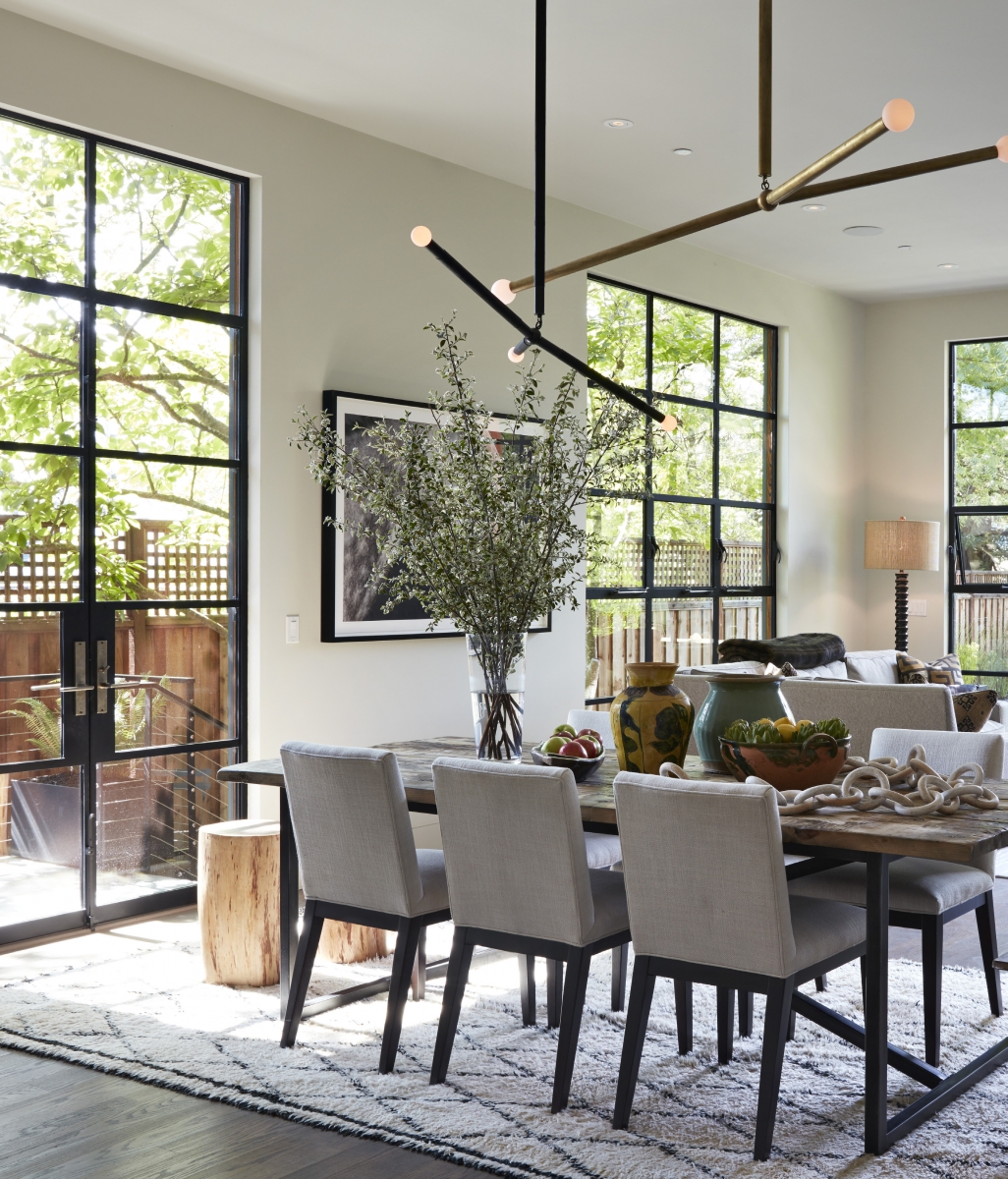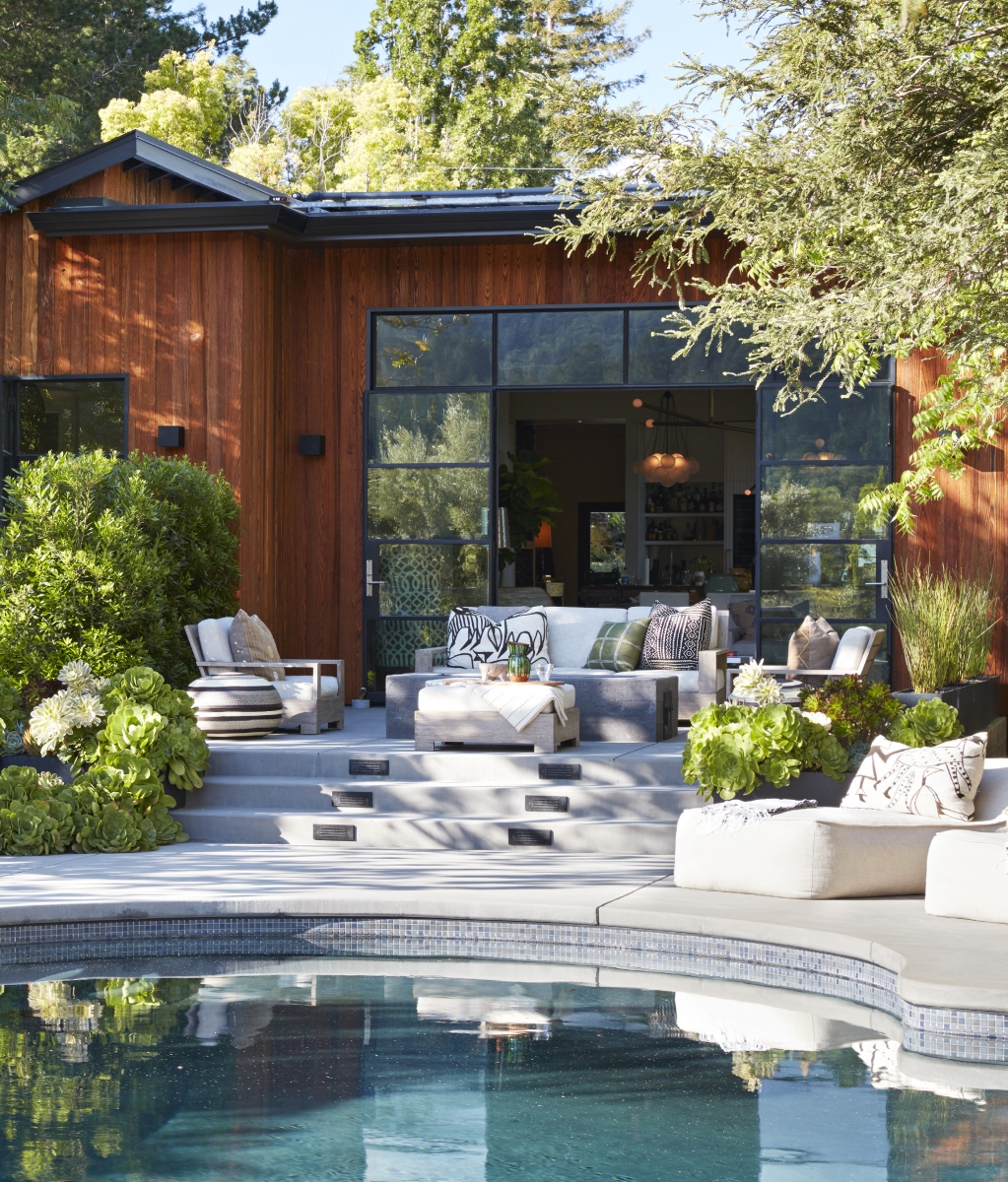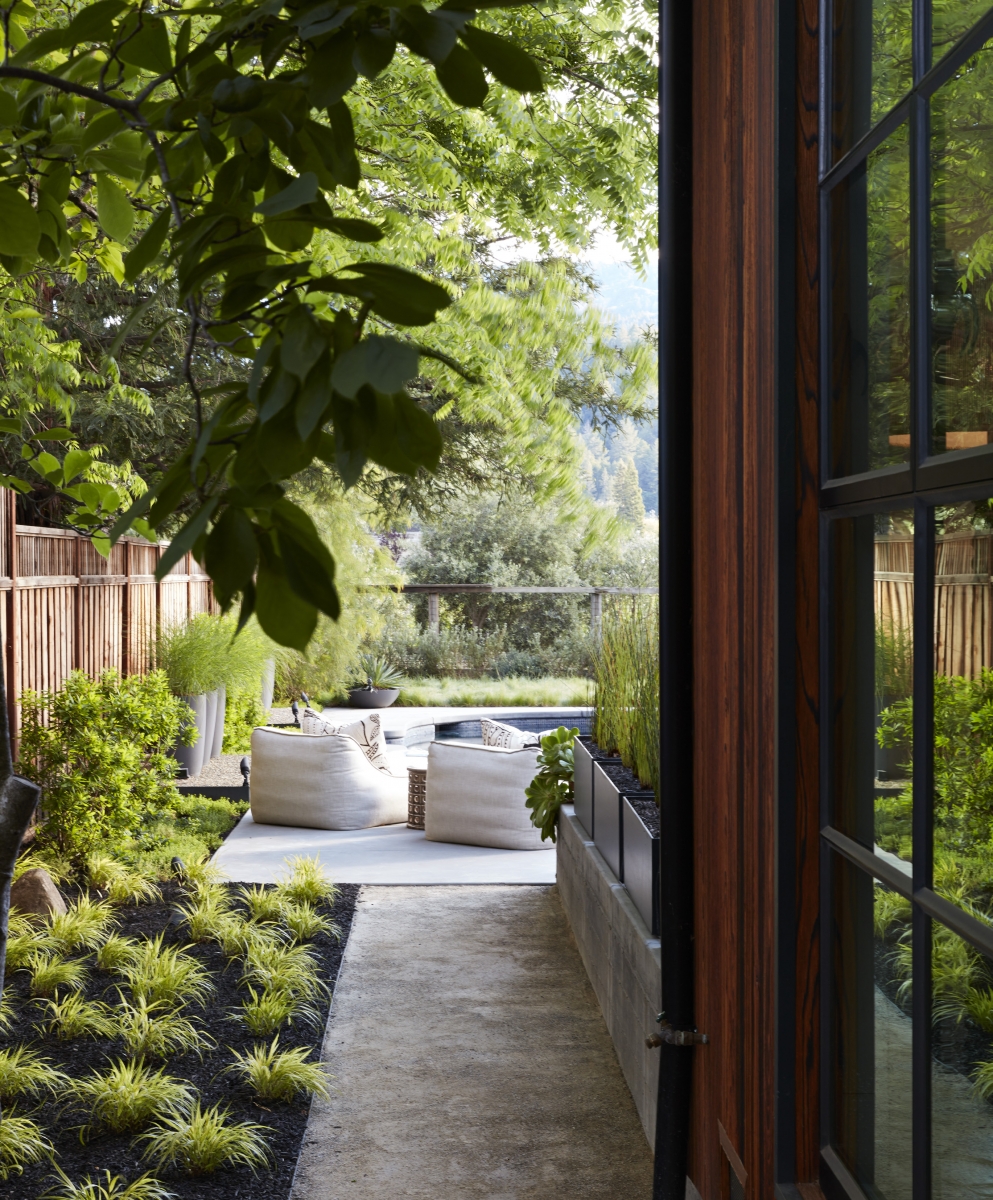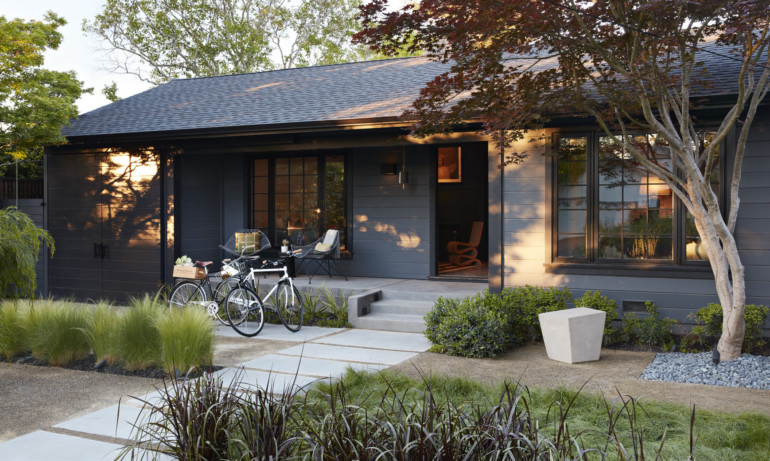DAVE MCMULLEN, NEWLY RETIRED FROM a decades-long corporate law career, recently resolved to become an interior designer, but it wasn’t a quixotic decision.
“I always tweaked the interiors of our homes in the past,” the intrepid 55-year-old says. “And then, after we hired interior designers Carolyn Einstein Dewar and Diane Einstein to reimagine our San Francisco home and explored design showrooms with them, I began to think of it seriously.”
However, it wasn’t until three years ago, when McMullen and husband Edward Ortiz found an L-shaped 1940’s ranch house in St. Helena during one of their frequent jaunts to Napa, that McMullen made his debut.
The 1,500-square-foot, single-story roost, with peaked roofs and a picket fence, was a manageable size that suited the small-town atmosphere.
“We loved quaint yet sophisticated St. Helena, where you can ride a bike to the grocery store,” McMullen says, and nearing retirement, he thought their weekend hideout could become their permanent home.
 Expanding the house and making the large backyard with a view of the Mayacamas Mountains a place for family gatherings became an imperative.
Expanding the house and making the large backyard with a view of the Mayacamas Mountains a place for family gatherings became an imperative.
Out front McMullen painted the siding gray and restored the windows, then focused most of his design acumen on a modest 500-square-foot extension (achieved with the help of local space planner Carolyn Leonhardt) that made the home’s footprint rectangular and doubled the living space. New cedar siding in back is also gray, lightly charred in the Japanese Shou Sugi Ban manner, “but not as dark,” McMullen says.
During their travels over the years, the couple has gathered textiles from Mexico, Bolivia and South Africa and many esoteric objects, including taxidermy, which all appear inside amid modern classics such as Frank Gehry’s cardboard Wiggle chair and new custom furniture. “I like to layer textures and materials,” McMullen says.
For instance, in the front parlor, the old brick fireplace is wrapped with blackened steel, and in the two guest rooms toward the street that remain essentially unchanged, McMullen added unusual wallpaper. In one bedroom, a Timorous Beasties design depicting iguanas and pineapples is a moody backdrop for a leather headboard draped with a woman’s poncho from Oaxaca.
The tiny guest bathroom is like a camera obscura, lined with dark embossed Ann Sacks wall tiles. Since a mirror could not be attached to the wall, a mirror hangs from the ceiling on a horse bridle, reflecting a light fixture from Coup D’Etat above a Carrara marble sink top.
To contrast with the original low-ceilinged scale of the front rooms, the new white-walled living/dining room, with its crisp Arclinea island kitchen on one side and steel French doors, soars to a height of 12 feet.
 Next to it, the master bedroom also opens onto a stepped terrace and garden created by San Francisco landscape designer Katharine Webster. It is relatively spare, accented with just a few handmade things to offset modern furniture from Design Within Reach.
Next to it, the master bedroom also opens onto a stepped terrace and garden created by San Francisco landscape designer Katharine Webster. It is relatively spare, accented with just a few handmade things to offset modern furniture from Design Within Reach.
“As far as I am concerned, back there the view is the star,” McMullen says. Redesigning the house to capitalize on wine country vistas was an obvious decision, but when it came to reconfiguring the modest 2,000-square-foot front garden and the larger 4,500-square-foot backyard occupied by old trees and a kidney-shaped swimming pool, the former city condominium dwellers were at a loss until Webster arrived.
“They were midway through construction and did not know if they could do anything with the yard and the pool without tearing it all out,” Webster recalls. “I told them they could.”
Now, although established trees that grew there still remain, new plantings, crushed granite and concrete paving better anchor the front and back gardens to the vineyard setting.
A horizontal-board boundary fence and soft and billowy grasses stand out against the charcoal gray building, and an asymmetrical composition of parallel beds and poured-in-place concrete pavers leading to the front door make the small front garden navigable during the winter. Old-fashioned “granny” camellias are gone, but “we saved the citrus trees and a Japanese maple,” Webster says.
 In the back garden, “we wanted a fire pit and a place to sit by the pool or read a book outside the master bedroom, but Kate conjured up outdoor rooms that have made our home twice as big,” McMullen marvels.
In the back garden, “we wanted a fire pit and a place to sit by the pool or read a book outside the master bedroom, but Kate conjured up outdoor rooms that have made our home twice as big,” McMullen marvels.
Webster laid an imaginary grid over the yard to demarcate various sections for dining under an existing magnolia tree and for lounging by the back fence next to a kitchen garden; she also cordoned off the pool within its own rectangular concrete patio. Black powder-coated steel edging separates the gravel, grass and crushed granite areas, and some boundaries are softened with cascading succulents and grasses in steel planters.
“I added several progressive planes as well to suggest movement,” Webster says. Starting at the top, the wide poured-in-place concrete terrace that abuts the lofty living room and master bedroom seamlessly steps down toward the pool area and the rest of the garden.
“Most of the plants are textural and lack flowers,” Webster says, because McMullen and Ortiz wanted a quiet, low-maintenance garden. They also used locally available, affordable materials, “but it is not just another garden with olive trees and rosemary in the country,” Webster says. The Chinese pistachio trees that existed there turn orange in the fall, and redwoods on the neighbor’s property add welcome woodland notes, even though their thirsty encroaching roots had to be surrounded with succulents in custom planters.
“Like any good room, a garden needs a focal point, and that was our secret,” Webster says. “With selective plantings and hardscape we framed views and the colors of the sky.”
[gtx_gallery]

Zahid Sardar brings an extensive range of design interests and keen knowledge of Bay Area design culture to SPACES magazine. He is a San Francisco editor, curator and author specializing in global architecture, interiors, landscape and industrial design. His work has appeared in numerous design publications as well as the San Francisco Chronicle for which he served as an influential design editor for 22 years. Sardar serves on the San Francisco Decorator Showcase design advisory board.


